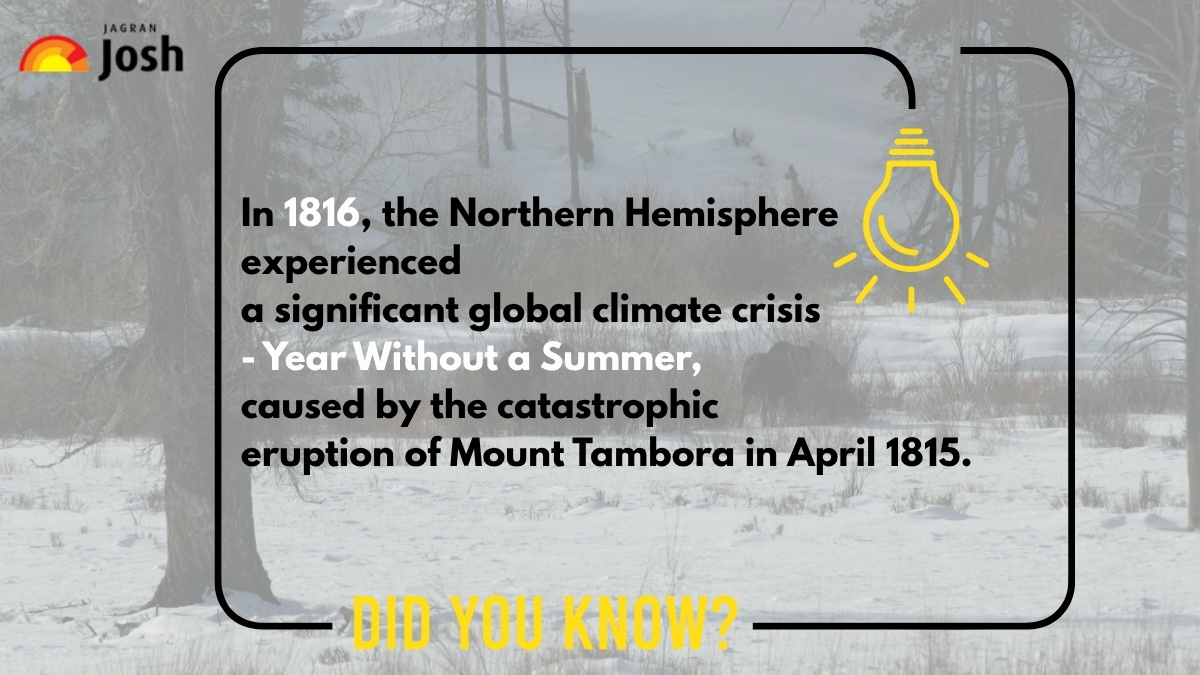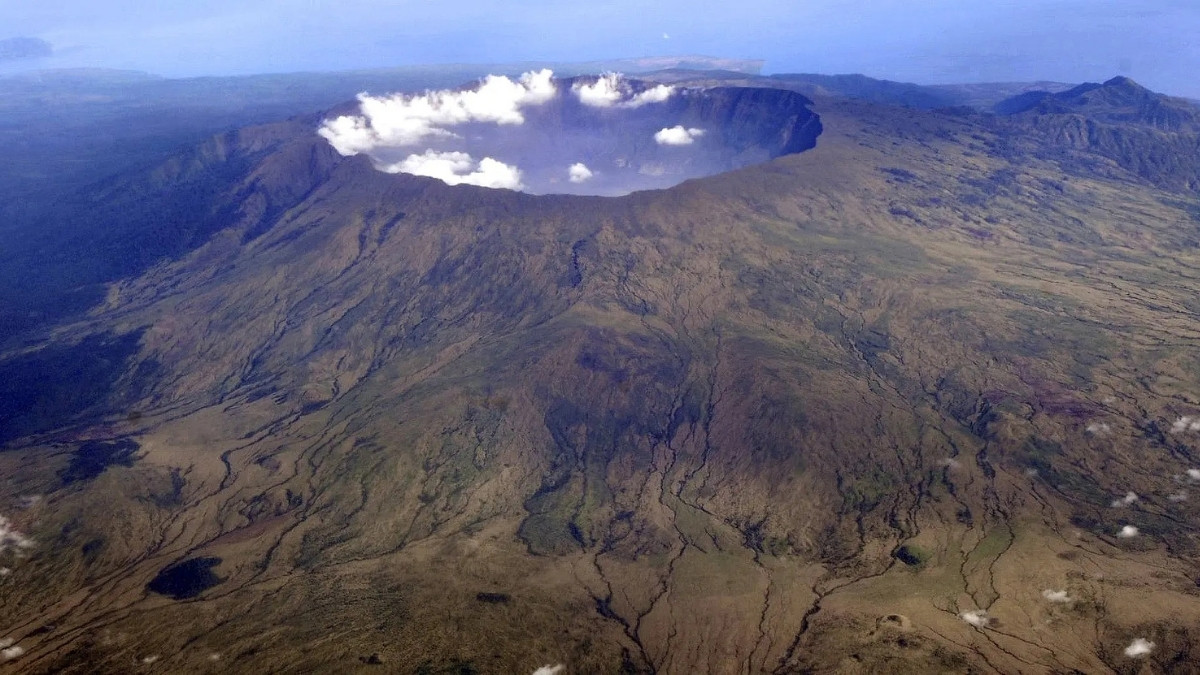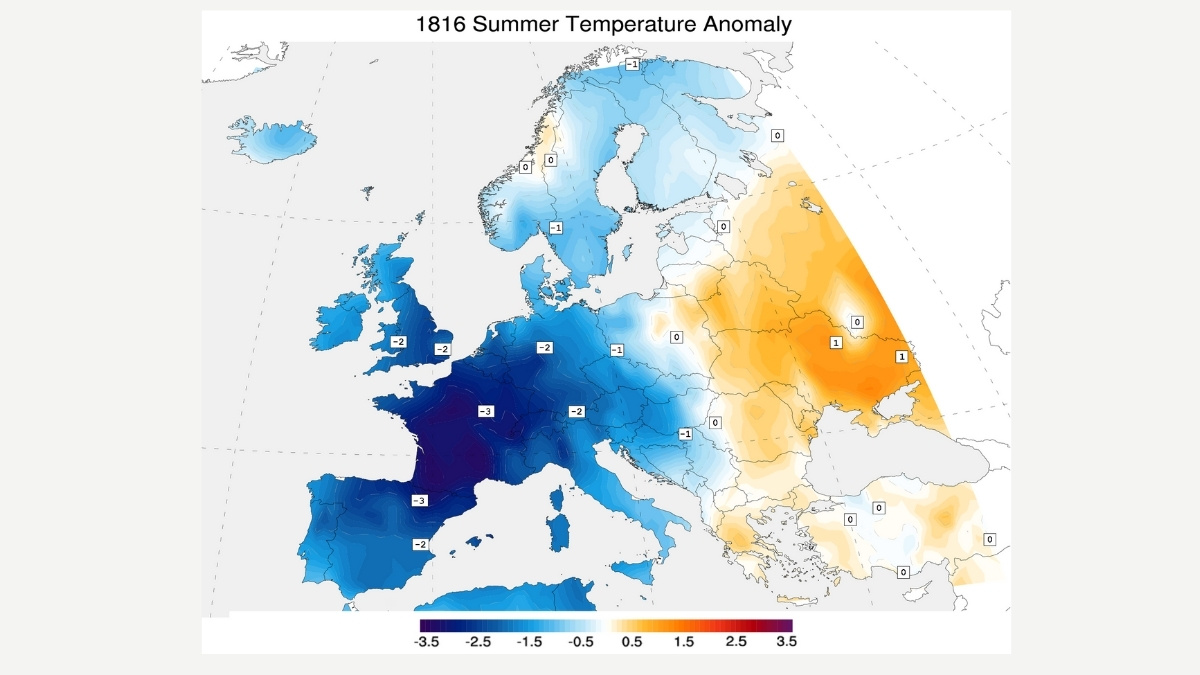The year 1816 is a chilling anomaly in climate history, known globally as the Year Without a Summer or, grimly, "Eighteen Hundred and Froze to Death." It was a sudden, worldwide climate crisis where frost and snow fell across New England and Europe throughout July and August.
This abrupt, catastrophic shift wasn't a seasonal fluke; it was a devastating global episode that plunged communities into famine and despair. Modern climate science has shown beyond a doubt that the huge eruption of Mount Tambora in Indonesia the year before was the main reason for this time of no summer.
Understanding the facts about a year without a summer reveals how a single geologic event can cause a "volcanic winter" that reshapes agriculture, inspires iconic literature, and even accelerates human migration.
Why was 1816 Called The Year Without a Summer?
The terrible weather of 1816 got its bad name because the normal summer months never came to most of the Northern Hemisphere, which caused a lot of damage to crops.
-
May Frost: Crops in New York and Massachusetts were killed by a deep frost.
-
June Snowfall: Heavy snow fell in Albany, New York, and parts of Canada. Rivers and lakes remained frozen as far south as Pennsylvania into July.
-
July and August: Temperatures often dropped from above average to near freezing in just a few hours, and frost covered a lot of ground until late August, which is when the harvest usually takes place.

The Real Cause: Eruption of Mount Tambora, 1815
What one thing caused this disaster around the world and the year with no summer? The primary suspect is the cataclysmic April 1815 eruption of Mount Tambora, located on Sumbawa Island, Indonesia.

Mount Tambora, Credit - The NYTimes
How Did a Volcano in Indonesia Affect the Whole World?
The eruption of Mount Tambora was the biggest ever recorded, with a Volcanic Explosivity Index (VEI) of 7. It sent about 37 cubic kilometers of stuff into the air.
The main cause was not the ash that fell nearby, but the gases and tiny particles that traveled to the upper atmosphere:
-
Sulphate Aerosols: Tambora released enormous amounts of sulfur dioxide (SO2) gas.
-
Stratospheric Veil: This gas reacted with water vapor in the stratosphere to form a massive cloud of tiny, reflective sulphate aerosol particles.
-
Solar Blockade: This global veil acted like a colossal sun-shield, circulating the planet and blocking solar radiation from reaching the Earth's surface.
-
Global Cooling: The resulting solar energy deficit caused average global temperatures to drop by 0.4–0.7°C, initiating a "volcanic winter" that peaked in 1816.

1816 Year without Summer Temperature Anomaly, Courtesy - Wikipedia
Also Read - List of 7 Most Active Volcanoes in the World 2025: Ranked
What were The Global Effects of The Year Without Summer?
The climate change of 1816 affected the whole world with famine, riots, and migration. Its effects were deep and often terrible, reaching far beyond North America and Europe.
The widespread crop failures triggered a massive humanitarian crisis. Take a look at the following major affected countries and continents due to the nuclear winter of 1816:
New England and Atlantic Canada
Prices for grain went through the roof because of huge failures in oats and corn. This lack of resources sped up the movement of thousands of farmers westward to the Midwest (Ohio and Indiana).
Europe
A lot of people in Ireland, Britain, and France are starving because there isn't enough grain. Food prices went up four times, which led to violent food riots in cities all over the continent.
Asia (India)
The atmospheric disruption affected the monsoon season. Delayed summer monsoons caused torrential late rains that facilitated the spread of a severe, novel strain of cholera, which became epidemic and eventually spread globally.
Asia (China)
The cold disrupted the growing season, leading to floods in the Yangtze Valley and widespread famine in Yunnan province, destabilizing the ruling Qing dynasty.
Check Out - List of Top 11 First World Countries in 2025: Ranked
Other Factors That Made 1816 a Year of No Summer
While Tambora was the main culprit, the severity of 1816, the year without a summer, was amplified by other long-term climate conditions already affecting the planet:
-
The Little Ice Age: The Earth was already in the final centuries of a natural period of cooling (roughly 14th to 19th century). The Tambora eruption simply added a sudden, acute dose of cooling to an already cold baseline.
-
The Dalton Minimum: This was a period of unusually low solar activity (1790 to 1830). Although its direct impact on global temperatures is still debated by scientists, this low solar energy output may have slightly contributed to the overall lack of warmth.
Because of this sudden drop in temperature, 1816 was the year without a summer, which historian John D. Post called "the last great subsistence crisis in the Western world."
Also Read - List of 5 Most Famous Animals that Migrate in Winter: Revealed
The Year Without a Summer is still a strong historical lesson about how sensitive the world's climate is. The volcanic eruption that happened 12,000 kilometers away in 1816 shows how one natural disaster can change the weather around the world, destroy societies, and show how fragile the world's food supply is.
Comments
All Comments (0)
Join the conversation